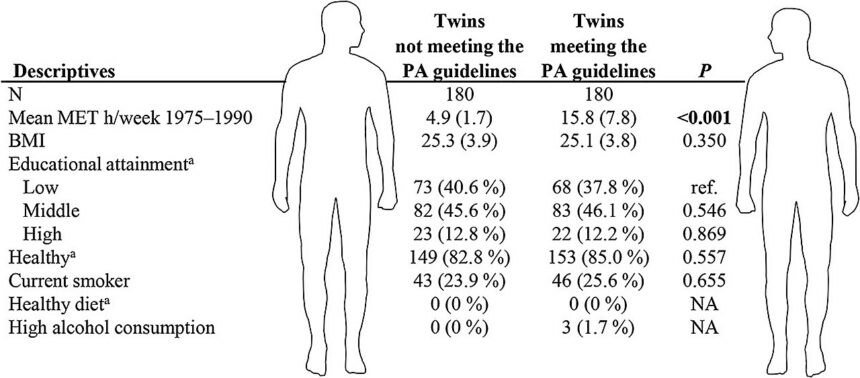A recent study conducted by researchers from the University of Jyväskylä, Finland, delved into the relationship between physical activity, longevity, genetic predisposition to diseases, and biological aging. The study, which included 22,750 Finnish twins born before 1958, focused on leisure-time physical activity levels assessed over a 15-year period and mortality rates up until the end of 2020.
The findings, published in the journals Medicine & Science in Sports & Exercise and the European Journal of Epidemiology, revealed interesting insights. The study identified four sub-groups based on physical activity levels—sedentary, moderately active, active, and highly active. Surprisingly, the greatest longevity benefit was seen between the sedentary and moderately active groups, with a 7% lower risk of mortality. Higher levels of physical activity did not yield additional benefits in terms of longevity.
Interestingly, the study also found that meeting the World Health Organization’s physical activity guidelines did not guarantee a lower mortality risk or alter genetic disease susceptibility. Even twins who adhered to the recommended levels of physical activity over the 15-year period did not show a significant difference in mortality rates compared to their less active twin pair.
Moreover, the study revealed a U-shaped relationship between physical activity and biological aging, with both the least active and most active individuals experiencing accelerated biological aging. Lifestyle factors such as smoking and alcohol consumption were found to largely explain the favorable associations of physical activity with biological aging.
Genetic data from 4,897 twins were analyzed to assess genetic susceptibility to cardiovascular disease, blood pressure, and mortality rates. The study was conducted in collaboration with the GenActive research group at the University of Jyväskylä and the Finnish Institute of Molecular Medicine at the University of Helsinki.
Overall, the study challenges the widely held belief that physical activity is a panacea for longevity and highlights the complex interplay between genetics, lifestyle factors, and mortality risk. The findings underscore the importance of considering individual genetic predispositions and lifestyle choices when evaluating the impact of physical activity on health outcomes.







